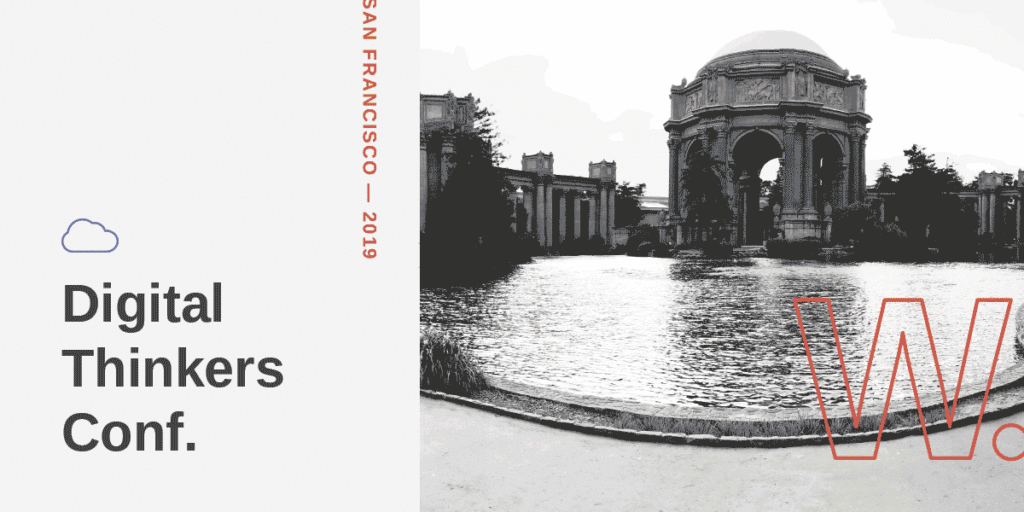
Awwwards Digital Thinkers 2019.
Jam-packed into just two days, the Digital Thinkers conference 2019 brought together 26 industry leaders to share their thoughts on the future of the web. Held at the doorstep to Silicon Valley, it featured speakers from some of the largest, most influential digital companies in the world, including Google, Facebook and Airbnb. More than 1,000 attendees from all over the world, including people from our team, gathered at the historic Palace of Fine Arts in San Francisco to soak it all in. While we walked away with heads full of inspiration and actionable to-dos, we reflected on our favorite takeaways. Here are just a few:
“The vessel can be as special as the idea itself.”
– Alex Cornell, Former Product Design Lead at Facebook
Nonconventional presentations were abundant during the conference, from T-shirt cannons to beautifully animated slide decks, and that stuck with us. Nothing was quite as special as Alex Cornell’s time on stage. He took us on a nonlinear path through more of a performance piece than a presentation. He and others proved how an idea can’t sell itself, no matter how excellent. It’s the conversation and context provided alongside the idea that gives it staying power in the mind of the audience. That vessel can be just as weird or complex as the original idea. Brandy Porter, director of brand design at MailChimp, also summed up the importance of weird: “Be weird, and be intentional in that weirdness … When we show our weird, we connect with our customers intimately.”
“All design is designing for the future – immediate, near or far. It’s imagining a desirable state and then giving it form.”
— Lisa Ding, Senior Product Designer at Twitter
Sometimes conversations about the digital space can feel futuristic and far-fetched, making it hard to find actionable solutions for right now. Lisa Ding told us to avoid the darkness that the idea of the future often holds and to embrace the fact that every day we are working toward creating something useful for tomorrow, next week or next year. Erik Klimczak, principal design director at Uber, discussed his methodology of designing at scale to future-proof developments. This methodology assumes every issue is infinitely connected to larger problems creating a need to zoom in and out to see how your solution affects or creates patterns to find the best solution.
“Designers no longer just design components themselves: They design policies that govern a system of components.”
— Hayley Hughes, Experience Designer at Airbnb
Hayley Hughes noted that designers can prove their value by being able to see components from a 30,000-foot view and not just how they physically look on the page. Design systems can help businesses make an efficient, resourceful environment and allow designers to focus on creating solutions that impact human experiences. Building and using a mutual or shared language will help with everything from accessibility to creating seamless teams. Similarly, Peter Smart from global design agency Fantasy Interactive pushed us to commit to getting beyond the most viable product and to design for the full human being: “Convention is just permission to try better … Fill your product with life. If it makes you happy, it will make others happy as well.”
July 25, 2019 | Creative





